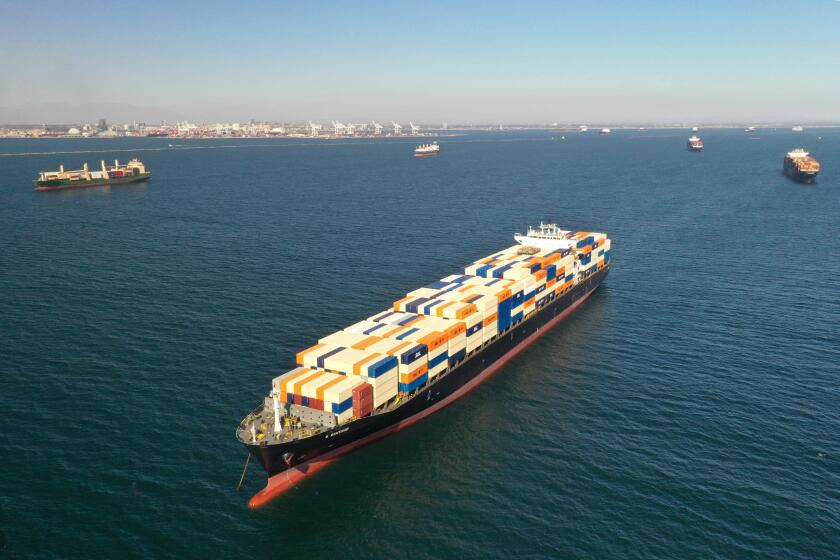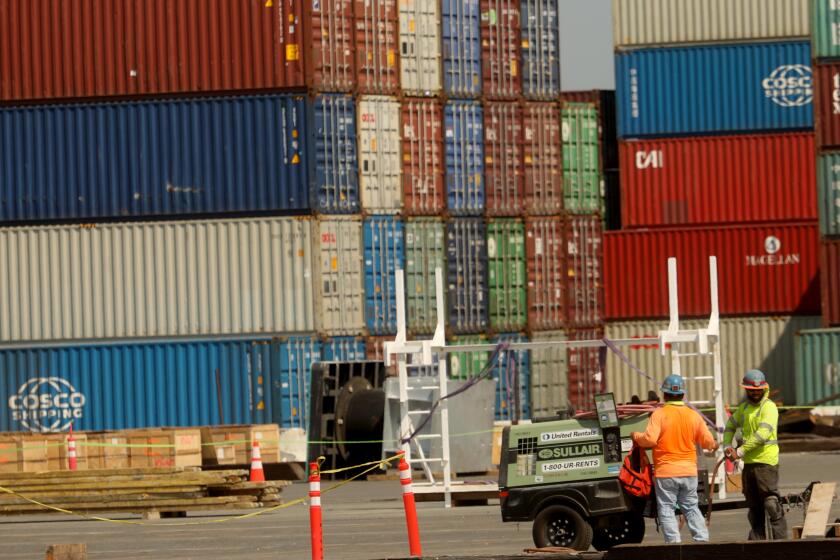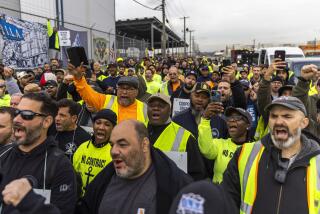A tangled supply chain means shipping delays. Do your holiday shopping now
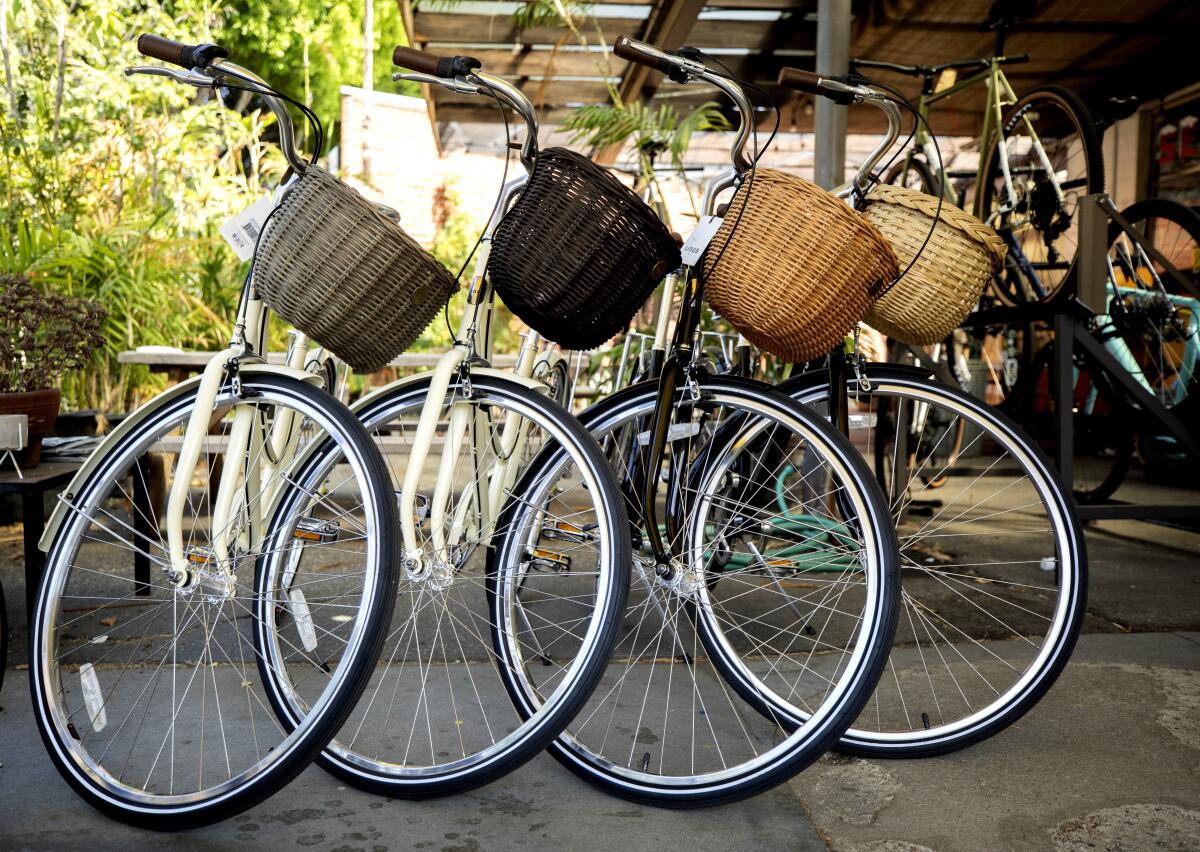
- Share via
Brian Bonilla was riding his handmade titanium bike recently when he glimpsed dozens of giant cargo ships anchored outside the Los Angeles and Long Beach ports, waiting for a chance to dock and unload their goods. Typically, only a handful of ships might be forced to wait like that, or they wouldn’t have to wait at all.
Bonilla works for the Cub House, a San Marino bike shop, making sure new bikes are properly adjusted for their riders. He knew that the floating traffic jam was a sign that the Cub House and every other U.S. bike shop might be waiting a long while for goods they hoped to be selling for the holidays.
“What we are trying to prep for right now at the store is Christmas time,” Bonilla said. “Usually, during Christmas time, kids’ bikes essentially sell themselves, but at the moment we’re trying to figure out how we’re going to get the kids’ bikes available for us.”
A global supply chain breakdown has resulted in gridlock at the ports of Los Angeles and Long Beach and beyond.
Although it’s only September, this is the all-important shipping season for products headed to U.S. merchants’ holiday shopping displays — toys, electronics, sporting goods and ugly Christmas sweaters.
Normally, the global supply chain of international goods movement is like a light switch on a wall: It just works. The products consumers want are available. No one thinks about how. No one thinks about the light switch — until it doesn’t work.

And right now, the global supply chain isn’t working. It’s been snarled by a host of factors: the pandemic, booming consumer demand, raging storms, shortages of cargo ships and containers as well as a lack of people willing to drive trucks or stock shelves in warehouses and retail stores for the wages offered.
The Los Angeles and Long Beach ports brace for an imports reduction as the peak holding shipping season kicks off.
That has led to a sense of urgency uncharacteristic for this time of year. A number of leaders with a broad range of economic expertise have a message for consumers:
- Get your holiday shopping done — right now. Come the traditional buying surge time, when the weather turns a bit colder, it may be too late because retailer inventory will be thin.
- Be prepared to accept your second or even third choice. Look for local or U.S. items. Make your own gifts.
- If you wait, be prepared to wait some more: Some products originally planned for the holiday season probably won’t arrive until sometime in 2022.
“There’s no certainty that if your child or the children in America are looking for a particular toy, that it will be around,” Ed Desmond, an executive vice president at the Toy Assn. trade group, said at a news conference Wednesday hosted by the Port of Los Angeles. “What we might see is a lack of a variety.”
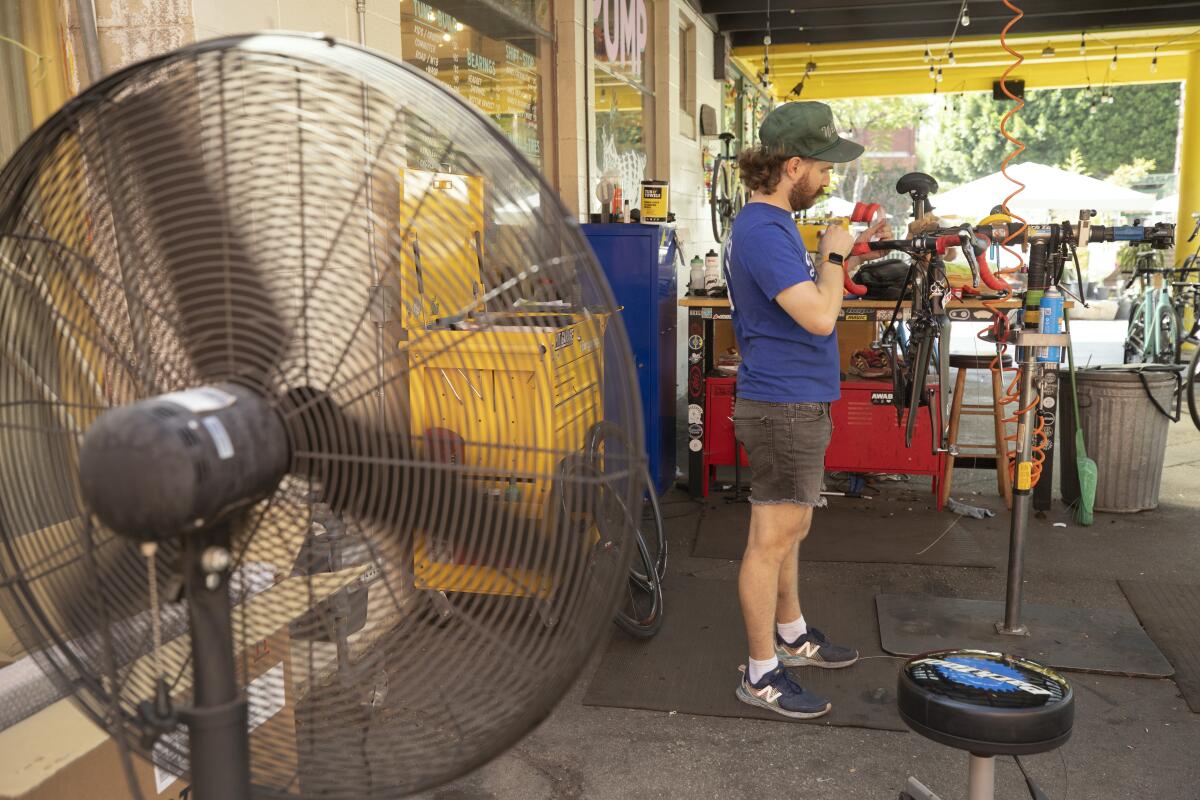
Stuck at home and flush with stimulus payments, U.S. consumers began spending with enthusiasm last year and haven’t stopped. There were plenty of shipping nightmares last holiday season, and experts fear that will repeat this year.
In June, the National Retail Federation bumped up its estimate for 2021 retail sales, predicting growth of 10.5% to 13.5%, to more than $4.44 trillion, in 2021. That was substantially higher than the 6.5% to 8.2% growth that the trade group predicted in February.
Even the ports of Los Angeles and Long Beach, which make up the fastest seaport complex in the U.S. and move more cargo in a month than many ports handle all year, can’t work fast enough. The neighboring ports, which last year handled nearly a third of U.S. imported products, are moving record numbers of steel cargo containers, most from China and other Asian countries.
“We’re getting into the full peak season,” said Gene Seroka, executive director of the nation’s largest seaport, the Port of Los Angeles. “Every node of this supply chain is maxed out.”
A record 89 cargo ships were anchored or drifting offshore Thursday afternoon, waiting to enter the L.A. and Long Beach ports to be unloaded, according to the Marine Exchange Vessel Traffic Service.
Seroka described cargo containers piled up on the docks by the thousands, waiting for a ride on the short railroad line within the ports that takes the steel boxes to their next trip by transcontinental rail. Others are driven by trucks to warehouses before they head to retailer shelves.
But railroads also are reporting backlogs, which add to product delays, and trucking companies say they don’t have enough drivers. Warehouses and retailers also complain that they can’t get enough workers.
The pandemic has spurred a wave of women’s entrepreneurship, especially among women who had never before started a business.
Some items are slower to get into the transportation network because the pandemic has disrupted operations at some Asian factories and seaports. In June, a COVID-19 outbreak shut part of the Yantian port in China, one of the world’s busiest. It has since reopened.
And when the items get to the docks, there aren’t enough cargo ships or containers because companies mothballed ships last year to save money early in the pandemic lockdown when consumers weren’t spending, said Keith Jelinek, managing director at the global consulting firm Berkeley Research Group in Emeryville, Calif.
“Now that we have a lot of demand, we have fewer ships,” he said.
That means shipping prices have soared. The price to move a cargo container across the Pacific Ocean is now about $10,000 to $15,000, up from $2,700 to $2,900 a year ago, Jelinek said.
Those costs have helped feed rising consumer prices.
The Labor Department said in August that consumer prices jumped 0.5% from June to July, the smallest increase since February. Prices jumped 5.4% compared with a year earlier.
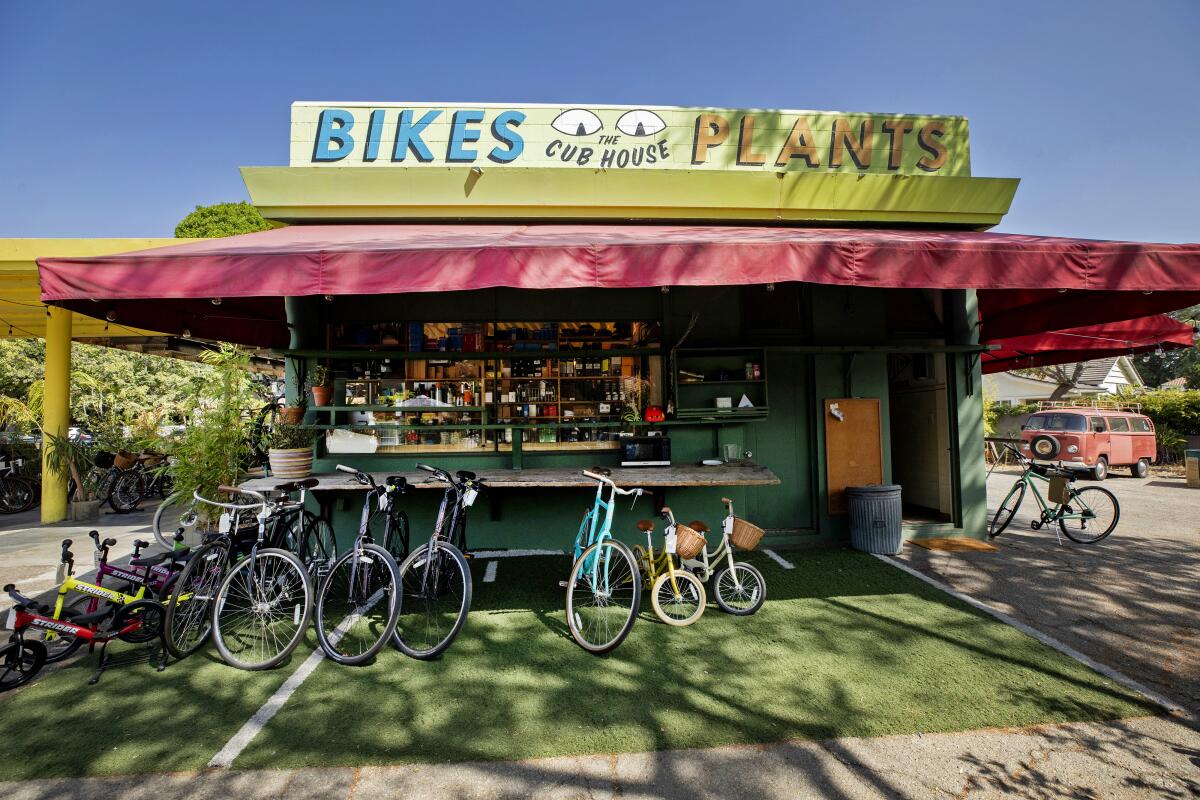
As cargo movement is stalled by ship, port, truck and rail problems, the effects will vary across the nation, said James Zahn, deputy editor of the Toy Book, a leading trade publication for the toy industry.
“This is something we haven’t really seen in the toy industry before, and that’s regional outages on specific items,” Zahn said. “Something might be plentiful in one state, or even one city; in the next one over, the shelves are completely bare because of how it’s filtered out within this strange distribution cycle.
“As a dad with two little girls, I know what it’s like to be chasing things. If you go to Amazon, you’ll start noticing that the delivery dates are actually further out than they usually are. So shop early, yes.
“You’ve got to be checking out independent toy stores that are staffed by folks that actually know toys. And if we come down to a point where something hot might be sold out, those folks can easily recommend another great toy for the kids that you’re shopping for.”
At the Cub House, supply shortages pushed owners Sean Talkington and Carla Alcibar to start the store’s own brand, called Beach Club. The store’s staff has built 45 bikes using some of the last shipments of parts and components received before the pandemic.
The problem returns, however, when their current supply sells out.
More to Read
Inside the business of entertainment
The Wide Shot brings you news, analysis and insights on everything from streaming wars to production — and what it all means for the future.
You may occasionally receive promotional content from the Los Angeles Times.
